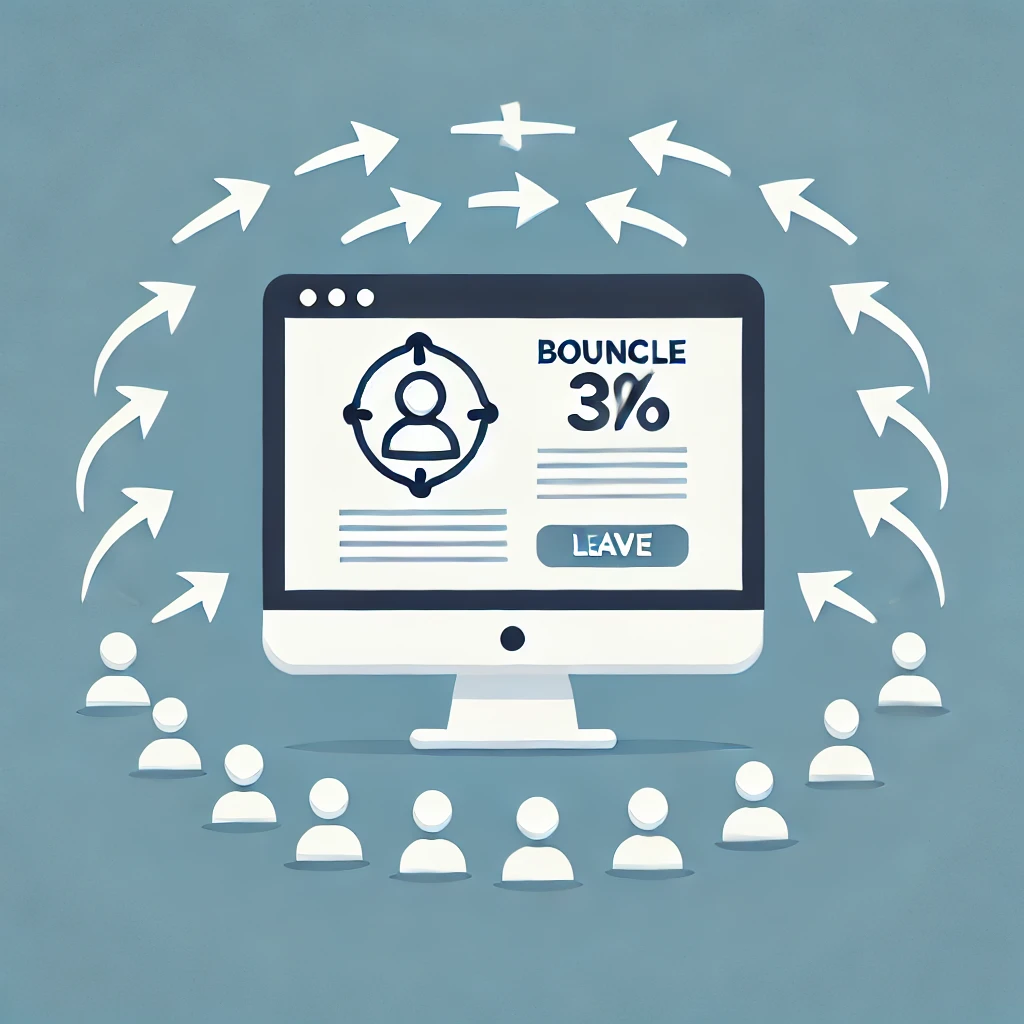The Impact of Bounce Rate on SEO and How to Improve It
Bounce rate is a term that gets mentioned a lot in SEO (Search Engine Optimization). But what does it mean, and why should you care about it? Simply put, bounce rate refers to the percentage of visitors who leave your website after viewing only one page. For example, if 100 people visit your website and 50 of them leave without clicking on anything else, your bounce rate is 50%.
A high bounce rate can negatively affect your SEO because it signals to search engines like Google that users may not be finding your content helpful or engaging. When search engines think your site isn’t delivering a good experience, it can cause your rankings to drop in search results. So, lowering your bounce rate can help improve your SEO and bring more organic traffic to your website.

Why Does Bounce Rate Matter?
- Signals User Experience
When someone visits your site and quickly leaves, it suggests they didn’t find what they were looking for. Search engines, especially Google, take this as a sign of poor user experience. A high bounce rate tells Google that users are not interested in your content, making it less likely for your website to rank higher. - Affects Rankings
Although bounce rate isn’t the only factor search engines look at, it’s still important. A lower bounce rate often indicates that users are engaging with your content, and that can help improve your search rankings. Websites with a lower bounce rate are seen as more valuable to users, which means they might rank better on search results. - Impacts Conversion
If you run an e-commerce website or offer services, a high bounce rate could mean fewer sales or sign-ups. Users leaving without exploring more pages is a missed opportunity for conversions. The longer someone stays on your site, the more likely they are to buy or take the action you want them to.
How to Improve Bounce Rate
Now that you know why bounce rate is important, let’s talk about how to improve it. Here are some simple strategies you can try to keep users engaged and reduce your bounce rate:
- Optimize Page Load Time
One of the main reasons people leave a website is slow loading time. If your page takes too long to load, visitors may leave before it even finishes. To fix this, ensure your website is optimized for speed. Compress images, reduce file sizes, and use fast hosting services. - Create Engaging Content
People are more likely to stay on your site if they find your content interesting and relevant. Use easy-to-read fonts, add images or videos, and break up text into smaller paragraphs to make it more readable. Also, make sure your content matches the user’s search intent. If someone is looking for tips on how to lose weight and you’re giving them ads for diet pills, they’ll leave quickly. - Use Internal Links
Internal links help guide visitors to other relevant content on your site. For example, if someone is reading about SEO tips, you can link them to another page that explains keyword research. This keeps users on your site longer, reducing your bounce rate. - Make Navigation Easy
If visitors can’t find what they’re looking for, they’re likely to leave. Make sure your website’s navigation is simple and intuitive. Use clear headings and a well-organized menu to help users find what they need quickly. - Improve Mobile Experience
Many people access websites from their smartphones. If your site isn’t mobile-friendly, visitors might leave right away. Make sure your website is responsive, meaning it works well on both desktop and mobile devices. Text should be easy to read, and buttons should be easy to click on smaller screens.
Conclusion
Bounce rate is a key metric that affects both SEO and user experience. A high bounce rate can lead to lower rankings, but by improving page load time, creating engaging content, using internal links, and optimizing for mobile, you can encourage visitors to stay longer and explore more of your site. The longer they stay, the better it is for your SEO!
